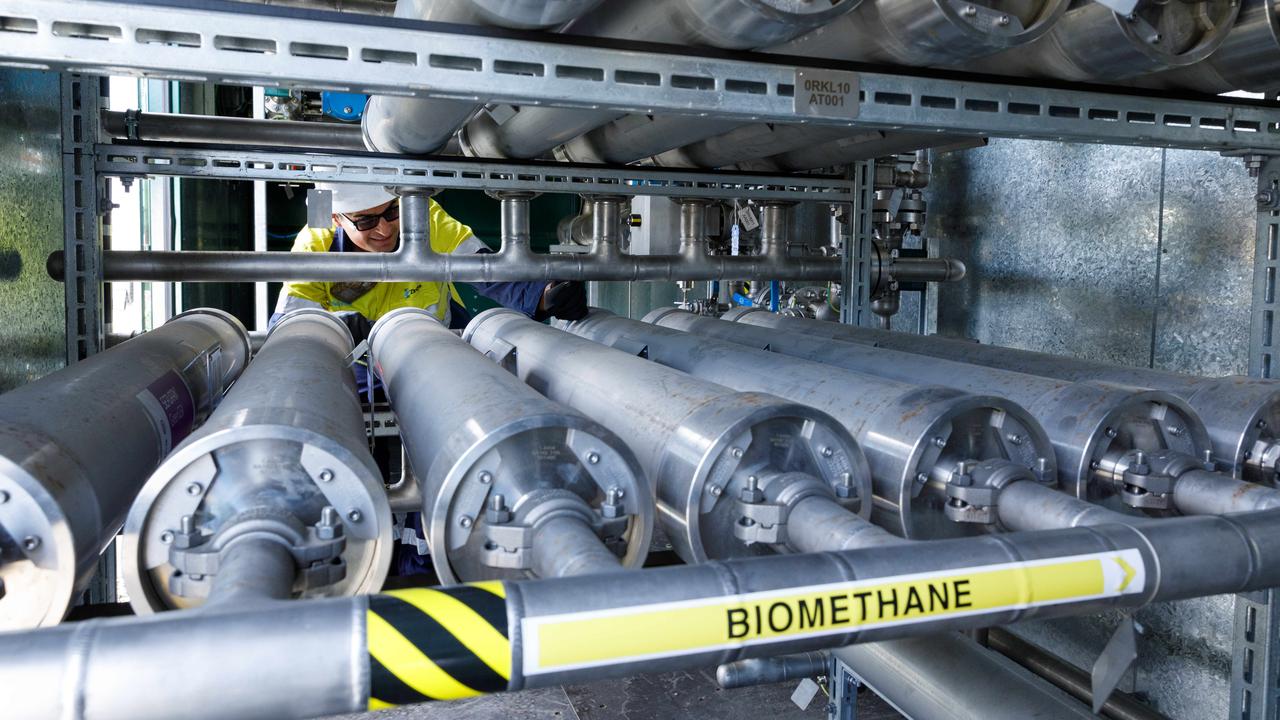Australia desperately needs to rev up a domestic renewable aviation fuel industry that could be worth $12 billion, proponents say – and sugar cane and even used cooking oils could be the keys.
Sustainable Aviation Fuel Alliance Australia and New Zealand chairwoman former Federal Labor MP, Terri Butler, said the time was now for industry and government to hit the accelerator on new-age fuels for planes, having fallen behind the US and Europe.
Ms Butler, talking at a Bioeconomy Summit in Sydney on Monday, said Australia was playing “catch-up footy” with other nations.
“We’re in a bit of a policy vacuum in Australia. If we don’t get moving we’re going to get left behind,” she said.
She said hydrogen and electric “aren’t going to be a viable option for decarbonising long haul flights”, amid mounting pressure both from governments and consumers to drop emission levels.
“Why’s that a problem? We’re Australia – we’re a long flight from everywhere else in the world,” she said.
Sustainable aviation fuel can be made from agricultural and industry by-products such as sugarcane and even used cooking oil and fats – which Australia has in abundance.
Sarah Chambers of the NSW Department of Regional Economic Development told the conference: “We have a really significant amount of biogenic feedstock, particularly in regional NSW.”
It comes after the Australian Airports Association warned two months ago international airlines could cut back their long-haul, high-emissions flights to Australia as various countries enforce emission limits on companies.
The only Aussie airline using sustainable aviation fuel is Qantas, which uses it when it refuels overseas.
According to NSW Government analysis, the market value of such fuel could form an $11.9 billion chunk of the Australian market by 2050, with NSW making up $4.8 billion of that.
Click here to find all the stories in The Future for Energy campaign
BIOGAS PLANS: AUSTRALIA’S POO-POWERED GAS INDUSTRY
A new type of power taking scat to the stovetop is bubbling away in a quiet corner of Sydney’s eastern suburbs, with the first step taken in creating Australia’s poo-powered gas industry.
The Malabar Biomethane Injection Plant takes sewage flushed down toilets and sinks in homes across Sydney, purifies it and then injects it back as gas into the network for use in stoves and heaters.
The trial is tracking to produce enough gas to meet the yearly needs of 6300 homes.
The plant began injecting recycled gas into the network in June in an Australia first, with those behind the project confident it could become a new energy source used in homes across the country.
Biogas, as the product is called, has become increasingly popular across the world, with analysis of Denmark’s gas sector forecasting that 75 per cent of the country’s gas demand will be met by biogas by 2030.
By 2034, all Danish gas consumption is expected to be met by biogas.
Energy giant Jemena, who have partnered with Sydney Water on the trial at Malabar, is confident Australia could make a similar leap.
“What Jemena is trying to do here is start the industry,” Brent Davis, Jemena’s business development manager of renewable gas, said.
“You look overseas in Europe, you’ve got 20,000 biogas plans.
“We see this is the start of Australia moving towards what we can see overseas.”
Mr Davis said the opportunity with biogas was that its production could be based in metropolitan suburbs, instead of far-flung corners of the Australian outback where gas production plants often are.
“The current set up is our gas is being supplied from large gas basins a long way from where we consume our gas – for bio-methane there’s the opportunity to have multiple supply sources which are local to the area, supply local jobs, and contribute to the local economy,” he said.
Sydney Water’s production manager at Malabar, Fiona Copenam, said the trial was creating a win-win where wastewater was being turned into power.
Sydney Water supplies the wastewater which is sucked into the complex equipment which cleanses it and turns it into usable gas.
The amount of waste water used varies day to day – but on a rainy day, up to 500 Olympic-sized swimming pools are harnessed at the plant to create gas.
In Ms Copenam’s own words, “a large proportion of it is your poo”.
“The more we talk to people (about it), the more excited they seem to be to get on board with these concepts. There’s a lot of support for using our waste water as an energy resource,” she said.
“I don’t think (people think of) wastewater treatment plants necessarily as energy producers, so I think it’s great we can get this message out (that) there’s so many untapped resources in wastewater.”
Originally published as How used cooking oil, sugar cane, poo could be used as energy in Australia
